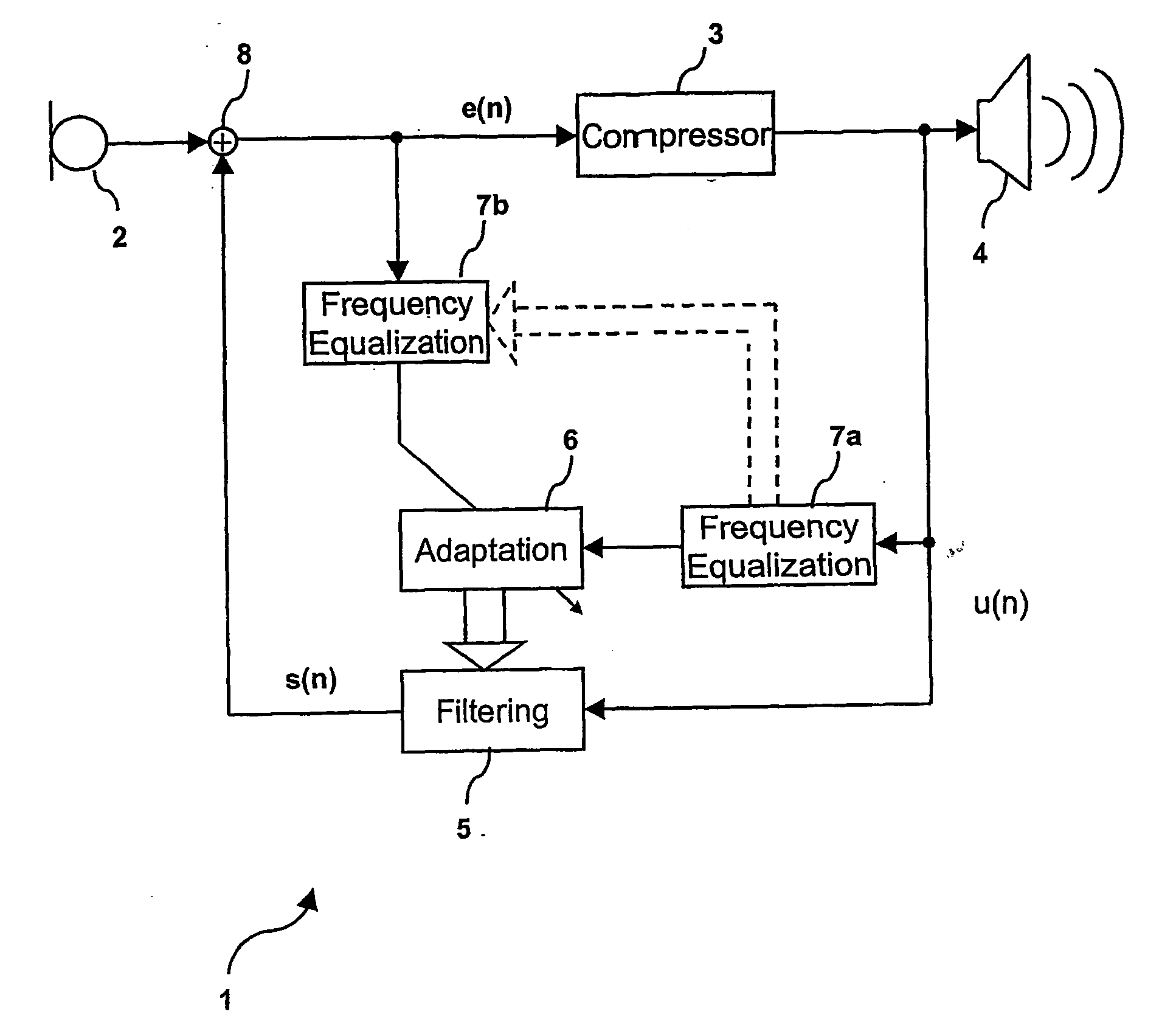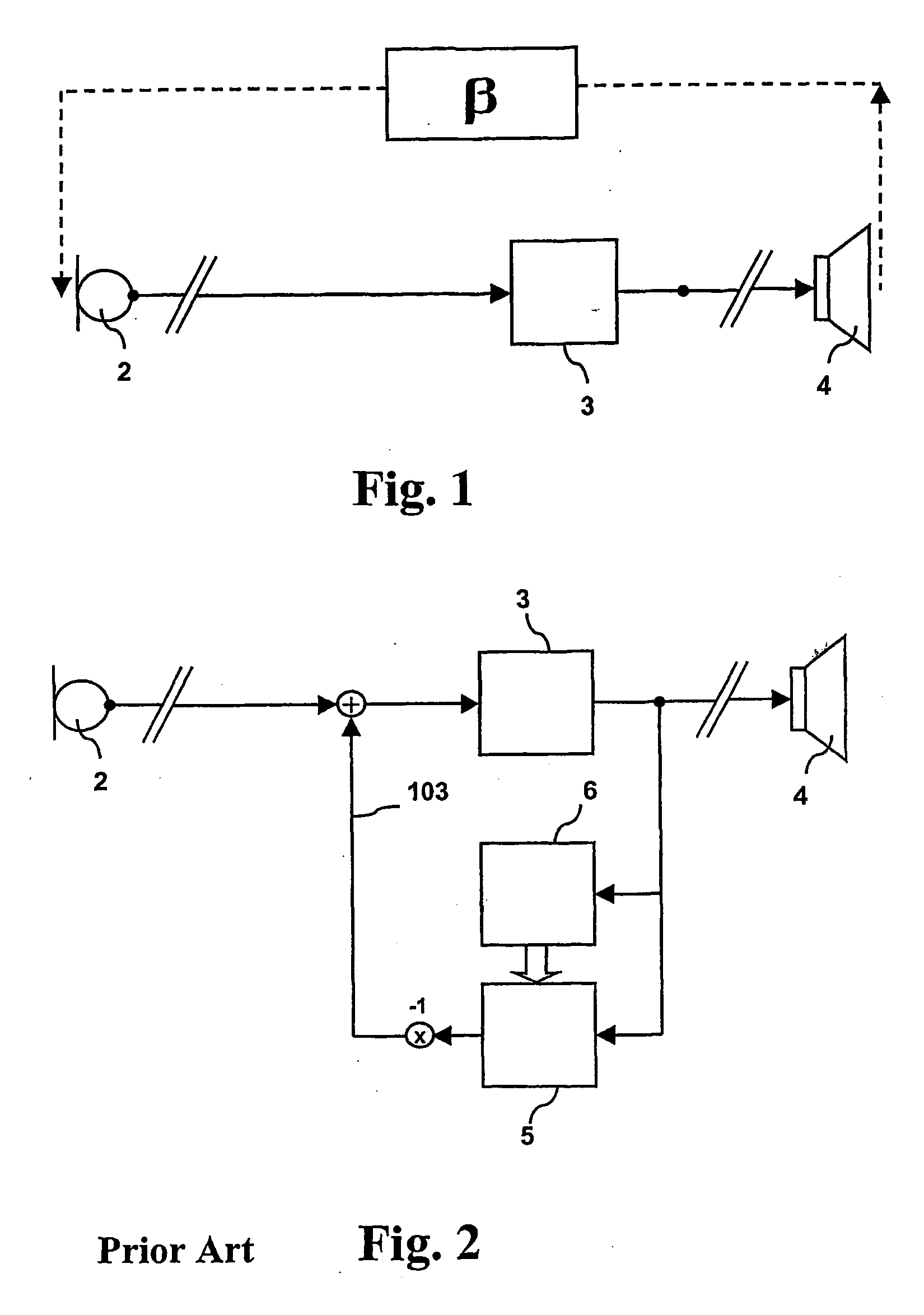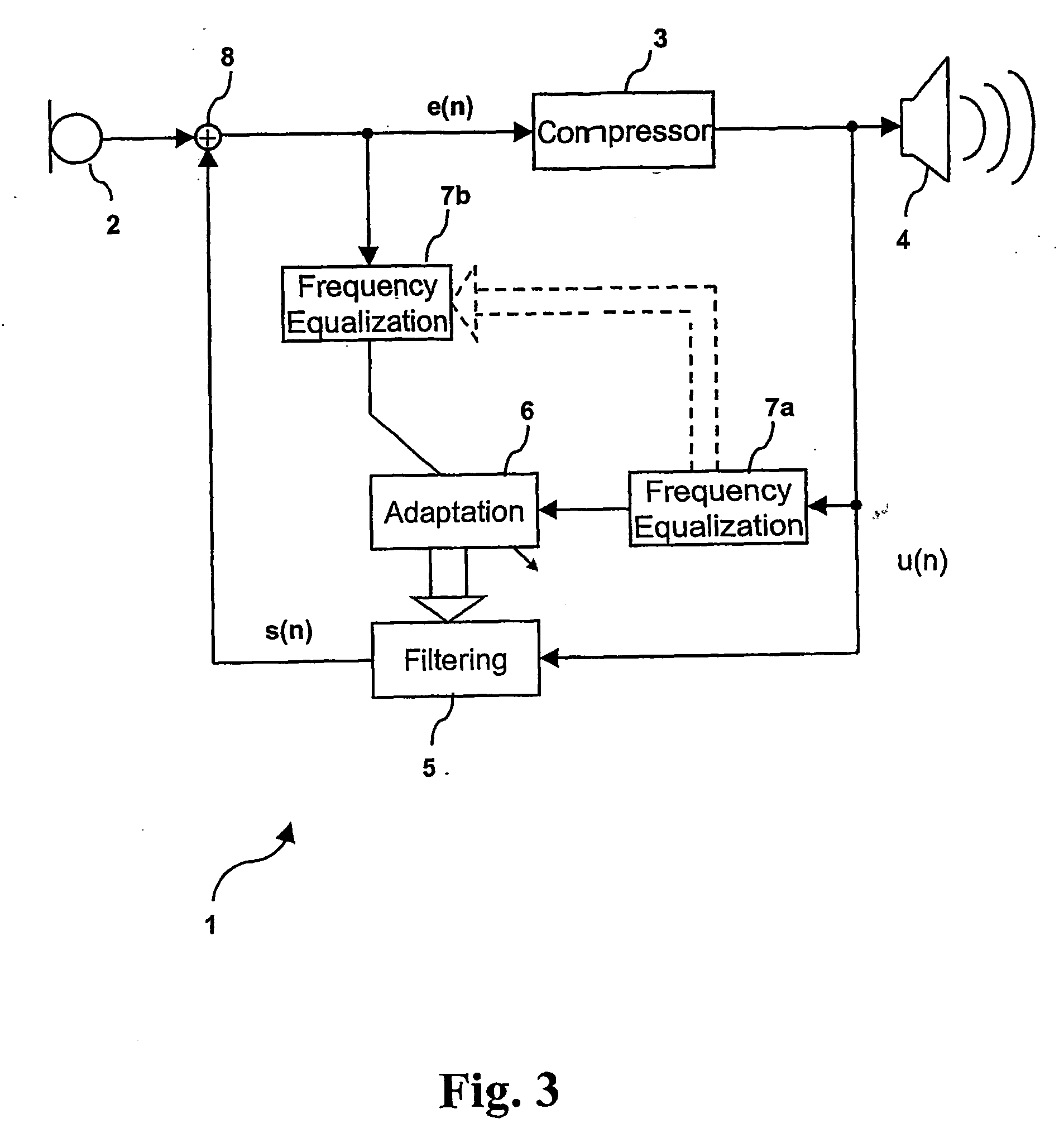Hearing aid comprising adaptive feedback suppression system
a technology of adaptive feedback and suppression system, which is applied in the field of hearing aids, can solve the problems of unstable output of hearing aid, once-inaudible acoustic feedback becoming audible, and the output of hearing aid generated within the ear canal can exceed the attenuation offered by the ear mould/shell, etc., and achieve the effect of fast gain adjustmen
- Summary
- Abstract
- Description
- Claims
- Application Information
AI Technical Summary
Benefits of technology
Problems solved by technology
Method used
Image
Examples
Embodiment Construction
[0033]FIG. 1 shows a simple block diagram of a hearing aid comprising an input transducer or microphone 2 transforming an acoustic input into an electrical input signal, a signal processor or compressor 3 amplifying the input signal and generating a processor output signal and finally an output transducer or receiver 4 for transforming the processor output signal into an acoustic output. The acoustic feedback path of the hearing aid is depicted by broken arrows, whereby the attenuation vector is denoted by β. If, in a certain frequency range, the product of the gain G (including transformation efficiency of microphone and receiver) of the processor 3 and the attenuation β is close to 1, audible acoustic feedback occurs.
[0034]FIG. 2 shows an adaptive feedback suppression system schematically. The output signal from signal processor 3 (reference signal) is fed to an adaptive estimation filter 5. A filter control unit 6 controls the adaptive filter, e.g. the convergence rate or speed ...
PUM
 Login to View More
Login to View More Abstract
Description
Claims
Application Information
 Login to View More
Login to View More - R&D
- Intellectual Property
- Life Sciences
- Materials
- Tech Scout
- Unparalleled Data Quality
- Higher Quality Content
- 60% Fewer Hallucinations
Browse by: Latest US Patents, China's latest patents, Technical Efficacy Thesaurus, Application Domain, Technology Topic, Popular Technical Reports.
© 2025 PatSnap. All rights reserved.Legal|Privacy policy|Modern Slavery Act Transparency Statement|Sitemap|About US| Contact US: help@patsnap.com



